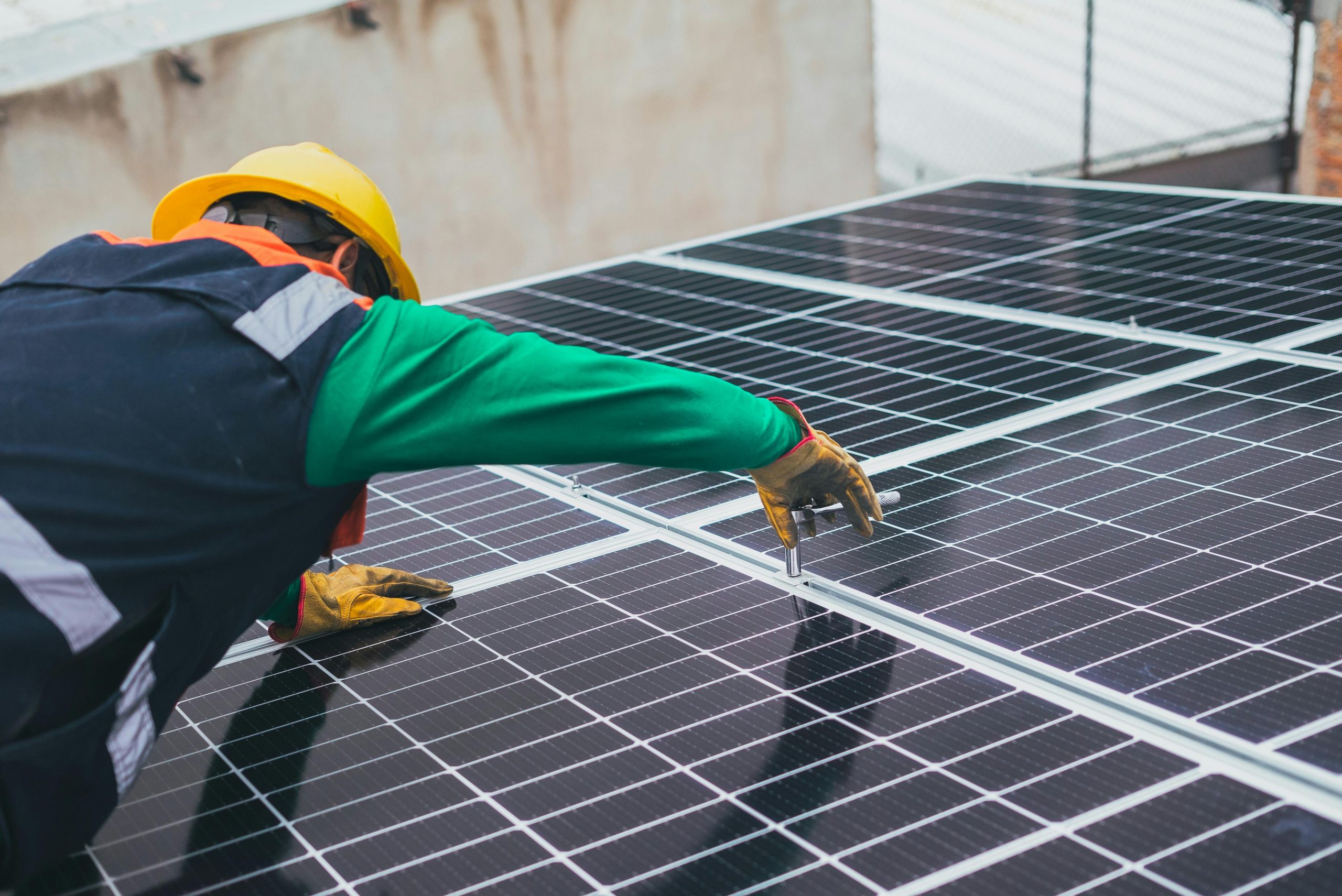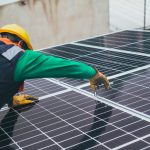Are rising energy costs threatening your business’s profitability while supply disruptions create operational uncertainty? The path to energy independence offers compelling solutions. Commercial solar installations delivered remarkable growth in 2025, with UK business solar capacity increasing by 31% according to Solar Power Portal’s latest industry report.
Modern Commercial Solar Solutions transform how companies manage energy expenses while securing long-term operational stability. Advanced battery-led systems with real-time monitoring capabilities enable businesses to achieve genuine energy autonomy, protecting against volatile market fluctuations and supply chain vulnerabilities.
Have you seen this : Transform your construction with premium building supplies
Key Benefits of Installing Solar Panels on Commercial Buildings
Installing solar panels on commercial buildings transforms your energy strategy from a recurring cost center into a strategic investment. Businesses typically reduce their electricity bills by 70-90% immediately after installation, creating substantial monthly savings that directly impact your bottom line.
Beyond immediate cost reduction, solar installations provide crucial protection against volatile energy markets. While traditional electricity rates continue climbing year after year, your solar-generated power maintains predictable costs for decades. This energy price stability enables more accurate budget forecasting and shields your business from unexpected utility rate increases.
Also to see : Buy cbd online: discover premium wellness products today
The environmental benefits extend far beyond cost savings. Commercial solar installations significantly reduce your company’s carbon footprint while demonstrating genuine commitment to sustainable practices. This environmental leadership enhances your corporate reputation, attracts eco-conscious customers, and helps meet increasingly important ESG objectives that stakeholders now expect.
Perhaps most importantly, solar panels provide energy security during grid disruptions. Modern battery-integrated systems ensure your operations continue running even during power outages, protecting against costly downtime and maintaining business continuity when competitors might struggle with energy supply interruptions.
Understanding Investment Returns and Performance Metrics
Commercial solar investments in the UK typically deliver their strongest returns within 5-7 years, though payback periods vary significantly based on energy consumption patterns and system sizing. The mechanism behind these returns centers on immediate electricity cost reductions, combined with revenue from excess energy exports to the grid through the Smart Export Guarantee scheme.
Real-time monitoring systems fundamentally transform performance optimization by providing granular data on energy production, consumption patterns, and system efficiency. These cloud-based platforms enable businesses to identify underperforming panels, optimize energy usage timing, and maximize self-consumption rates. When combined with battery storage solutions, monitoring data helps determine optimal charge-discharge cycles to minimize grid dependency during peak tariff periods.
Several critical factors influence overall profitability beyond initial installation costs. Roof orientation and shading conditions directly impact generation capacity, while local electricity rates determine the value of displaced grid consumption. System maintenance requirements, inverter replacement schedules, and degradation rates of approximately 0.5% annually all affect long-term financial performance. The most successful installations consistently achieve 20-25% internal rates of return over their 25-year operational lifespan.
Essential Criteria for System Sizing and Technology Selection
Proper system sizing requires a comprehensive evaluation of multiple interconnected factors to ensure optimal performance and maximum ROI. The most successful commercial solar installations begin with a thorough technical assessment that considers both current energy needs and future scalability requirements.
Our advanced dimensioning process incorporates cutting-edge technology integration to deliver systems perfectly matched to your business operations:
- Energy consumption analysis – Detailed assessment of your facility’s power usage patterns, peak demand periods, and seasonal variations to determine optimal system capacity
- Roof capacity evaluation – Structural analysis of available roof space, weight-bearing capacity, and potential obstacles to maximize panel placement efficiency
- Orientation and tilt optimization – Precise calculation of panel positioning to capture maximum solar irradiance throughout the year, accounting for local weather patterns
- Battery integration planning – Strategic sizing of energy storage systems to ensure continuous power availability and protection against grid disruptions
- Hybrid inverter selection – Advanced power conversion technology that seamlessly manages solar generation, battery storage, and grid connection for optimal energy flow
- Cloud monitoring systems – Real-time performance tracking and predictive maintenance capabilities through our proprietary energy management platform
Maximizing Energy Independence Through Advanced Technology
The path to complete energy independence requires more than just solar panels on your roof. It demands a sophisticated ecosystem of advanced technologies working in perfect harmony to protect your business from supply disruptions and rising energy costs.
At the heart of true energy independence lies real-time energy management systems that monitor and optimize every kilowatt hour flowing through your facility. These intelligent systems continuously balance energy production, consumption, and storage, ensuring maximum efficiency throughout the day. When combined with high-capacity battery storage solutions, they create a resilient energy infrastructure that operates seamlessly during grid outages.
Modern hybrid inverters serve as the command center of this technological symphony, automatically switching between grid power, solar generation, and battery reserves based on real-time conditions. This intelligent switching capability means your operations continue uninterrupted, even when external power supplies fail. The system learns your energy patterns and optimizes performance accordingly, reducing waste and maximizing savings.
Cloud-based monitoring platforms provide unprecedented visibility into your energy ecosystem, allowing facility managers to track performance metrics, identify optimization opportunities, and receive instant alerts about system status. This level of control transforms energy from a variable cost into a predictable asset that supports long-term business planning.
Implementation Process and Professional Installation
Every commercial solar project begins with a comprehensive energy audit that evaluates your business’s current consumption patterns, roof structure, and electrical infrastructure. This detailed assessment forms the foundation for designing a system that maximizes your energy independence while ensuring optimal return on investment.
The design phase involves creating a customized solution tailored to your specific requirements. Our engineers develop detailed technical specifications, taking into account your building’s orientation, local weather patterns, and future growth projections. This bespoke approach ensures your system delivers peak performance for decades to come.
Administrative coordination runs parallel to design development. Our team handles all necessary permits, grid connection applications, and regulatory compliance documentation. This comprehensive service eliminates bureaucratic delays and ensures your project meets all local authority requirements without disrupting your business operations.
Professional installation by certified technicians guarantees system reliability and safety. The process includes rigorous quality control checks at every stage, from mounting hardware placement to electrical connections and inverter configuration. Comprehensive testing validates performance before system commissioning.
Post-installation support remains crucial for long-term success. Regular maintenance schedules and real-time monitoring through our cloud-based platform identify potential issues before they impact performance, ensuring your investment continues delivering maximum value year after year.
Questions Fréquentes sur les Solutions Solaires Commerciales
How much do commercial solar panels cost for my business?
Commercial solar installation costs vary from £50,000 to £500,000 depending on system size, roof complexity, and energy requirements. Most businesses see significant savings within the first year of operation.
What are the benefits of installing solar panels on commercial buildings?
Commercial solar panels reduce electricity bills by 70-90%, increase property value, provide energy independence, offer tax incentives, and demonstrate environmental commitment to customers and stakeholders.
How long does it take to see return on investment from commercial solar systems?
Most commercial solar systems deliver full ROI within 4-7 years. With current energy prices and government incentives, many businesses recover their investment even faster.
Can my business become completely energy independent with solar panels?
Yes, with properly sized solar arrays and battery storage systems, businesses can achieve complete energy independence. Our hybrid solutions ensure power availability even during grid outages.
What size solar system do I need for my commercial property?
System sizing depends on your annual energy consumption, roof space, and budget. Our experts conduct detailed energy audits to determine the optimal system configuration for maximum efficiency.
Do you offer real-time monitoring services for commercial solar installations?
Our proprietary cloud-based monitoring system provides 24/7 real-time performance tracking, predictive maintenance alerts, and detailed energy production analytics to maximize your investment returns.











